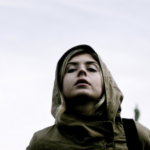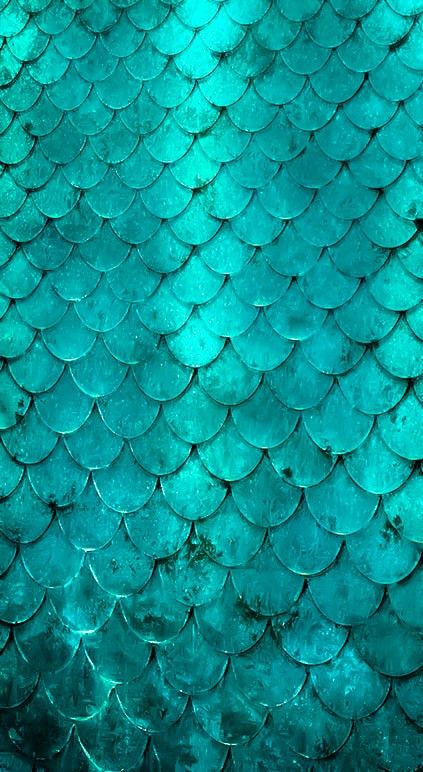In the realm of design and aesthetics, colors play a pivotal role in conveying emotions, setting moods, and creating visual harmony. One color that has been captivating designers and artists alike is the mesmerizing teal. In this comprehensive exploration of the teal color palette, we delve into the depths of its history, psychology, and versatility. Join us as we unravel the enchanting world of teal.
The Origin of Teal
Teal, as a color, finds its roots in the natural world. It draws inspiration from the iridescent feathers of the male teal duck, known for its striking greenish-blue plumage. This vibrant and eye-catching hue has been used by humans for centuries, dating back to ancient civilizations.
The term “teal” itself was first coined in the English language in the late 19th century. It quickly gained popularity due to its unique and refreshing appearance. Today, teal is celebrated not only for its natural origins but also for the feelings and emotions it evokes.
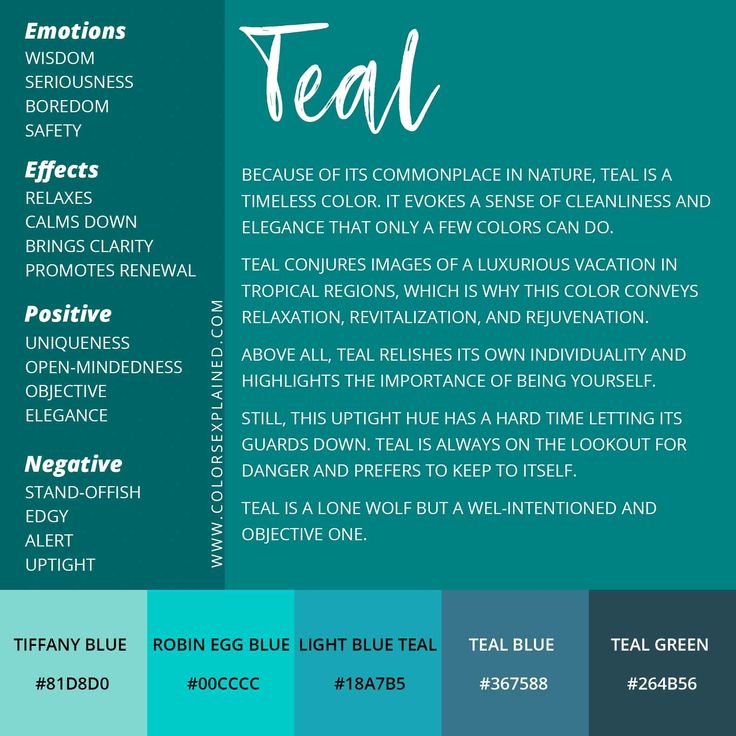
The Psychology of Teal
Understanding the psychology behind colors is crucial in design. Teal, with its blend of green and blue, carries a sense of balance and tranquility. It is often associated with qualities such as:
1. Calmness
Teal exudes a sense of calm, making it an ideal choice for spaces meant for relaxation, such as bedrooms and meditation rooms. Its soothing properties can help reduce stress and anxiety.
2. Creativity
Teal sparks creativity and inspiration. It encourages open thinking and artistic expression, making it a popular choice in creative industries like graphic design and interior decoration.
3. Sophistication
Teal is a color of sophistication and elegance. It adds a touch of refinement to any setting, making it a favorite for upscale events and fashion choices.
4. Healing
In color therapy, teal is associated with healing and rejuvenation. It is believed to promote emotional balance and physical well-being.

Teal in Design
Teal’s versatility shines in various design applications, from fashion to interior design. Let’s explore how this captivating color is used in different contexts:
1. Fashion
Teal is an absolute favorite among fashion designers for several compelling reasons. This captivating color has an extraordinary ability to make a bold and memorable statement. Whether it graces an elegant evening gown or adorns a stylish tie, teal has an undeniable power to command attention and radiate confidence.
In the world of fashion, teal has been a go-to choice for those who wish to express themselves with flair. Teal garments, be they dresses, suits, or accessories, have the unique quality of standing out while maintaining an air of sophistication. This makes it a versatile choice for both formal events and everyday fashion.

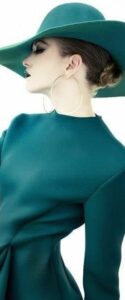
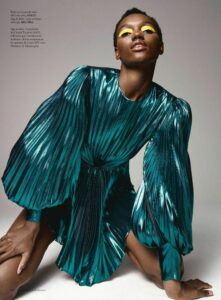
Fashionistas appreciate teal for its versatility, as it pairs beautifully with complementary colors, allowing for creative combinations that suit a variety of tastes and occasions. The allure of teal lies not only in its aesthetic appeal but also in the emotions and personality it conveys.
2. Interior Design
Teal’s versatility extends seamlessly into the realm of interior design. Designers and homeowners alike have embraced teal for its ability to transform living spaces into captivating havens of style and comfort.
Teal can be employed in various ways in interior design:
- Wall Color: Teal walls can infuse a room with energy and personality. They provide a bold backdrop for furniture and decor, creating a sense of drama and visual interest.
- Furniture Upholstery: Teal upholstery on sofas, chairs, or cushions adds a touch of elegance and sophistication. It complements other elements in the room and can serve as a focal point.
- Decorative Accessories: From teal curtains to decorative vases and artwork, this color adds depth and character to any interior. It pairs beautifully with neutral tones, creating a harmonious balance.

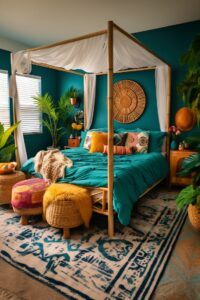
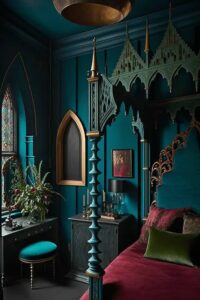
Teal’s versatility allows it to adapt to various interior design styles, from modern and minimalistic to vintage and eclectic. It can evoke a sense of serenity in a bedroom or infuse energy into a living room. Teal’s timeless appeal ensures that it remains a top choice for interior designers around the world.
3. Branding and Marketing
In the realm of branding and marketing, teal is a color that resonates with both businesses and consumers. Many successful brands have recognized the power of teal and incorporated it into their logos, packaging, and marketing materials.
Teal symbolizes trustworthiness and reliability. It conveys a sense of responsibility and commitment, making consumers feel confident in their choices when they encounter teal-branded products or services. This color choice creates a lasting impression of professionalism and quality.

Whether it’s a teal logo on a tech company’s website or teal packaging for a skincare product, this color has a unique ability to convey a sense of trust, making it an excellent choice for businesses aiming to establish a strong and credible brand identity.
4. Art and Photography
Teal’s aesthetic allure extends beyond the world of fashion and interior design; it also captivates the realms of art and photography. Artists and photographers harness the power of teal to create captivating visuals that evoke a range of emotions.
- Backdrop for Subjects: Teal often serves as a versatile backdrop for subjects in photography and art. Its unique blend of green and blue can enhance the colors of the subjects in the foreground, creating visually stunning compositions.
- Primary Focus: On the other hand, teal can also take center stage as the primary focus. Artists use teal as the main color in their compositions to convey emotions such as tranquility, mystery, or even a sense of the otherworldly.

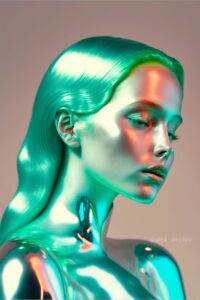
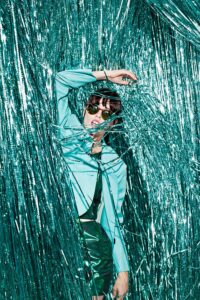
In both art and photography, teal’s ability to inspire creativity and set the mood makes it a valuable tool for artists to express themselves and connect with their audience on a profound level.
Complementary Colors
Teal is incredibly versatile when it comes to pairing with other colors. Here are some stunning combinations:
1. Teal and Coral
The combination of teal and coral is a masterful play of contrasting temperatures on the color wheel. Teal, with its cool and calming essence, is met with the warm and vivacious nature of coral. The result is a visually striking and balanced palette that ignites a sense of energy and harmony.
- Beach-Themed Decor: This dynamic pairing is often the cornerstone of beach-themed decor. Teal represents the serene waters of the ocean, while coral mirrors the vibrant hues of coral reefs. Together, they transport us to coastal paradises, creating a refreshing and inviting ambiance.
- Wedding Color Scheme: In the world of weddings and events, teal and coral have become a popular choice. They infuse weddings with a touch of tropical allure, evoking feelings of joy and celebration. Teal bridesmaid dresses and coral floral arrangements come together to create a stunning visual spectacle.
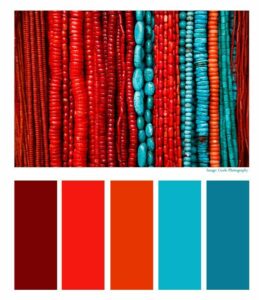
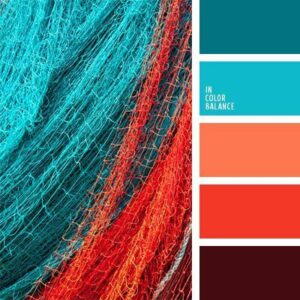
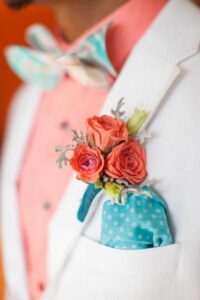
2. Teal and Gold
Teal and gold are a classic duo that exudes opulence, luxury, and timeless elegance. This pairing combines the cool, calming influence of teal with the regal, radiant allure of gold.
- Elegant Weddings: Teal and gold have long been favored as the color scheme for elegant weddings and upscale events. The regal gold accents complement the cool teal tones, creating an atmosphere of sophistication and grandeur.
- Home Decor: In interior design, teal and gold offer a touch of glamour. From teal walls adorned with gold-framed artwork to gold accents on teal furniture, this combination adds a sense of luxury and richness to living spaces.
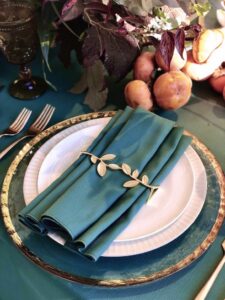
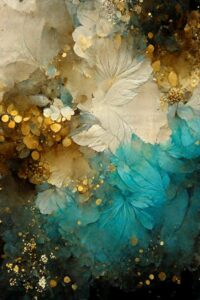

3. Teal and Gray
For those seeking a more subdued and modern look, the pairing of teal and gray is a match made in design heaven. Teal’s vibrancy finds balance in the neutral and calming shades of gray.
- Contemporary Interior Design: Teal and gray are often seen in contemporary interior design. Teal can be used as an accent color in a predominantly gray space, adding pops of color and visual interest. This combination creates a serene and sophisticated atmosphere.
- Corporate Settings: In corporate settings, teal and gray convey professionalism and stability. The teal accents bring a touch of creativity and energy to an otherwise neutral and formal environment.
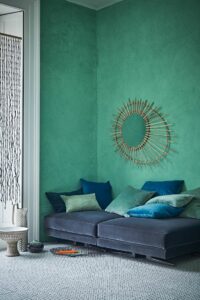
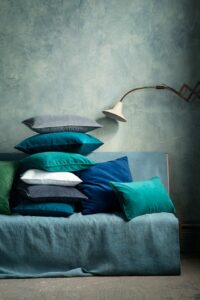

4. Teal and Earth Tones
Teal’s versatility shines when it is paired with earthy colors such as browns and beiges. This combination creates a harmonious and natural feel, evoking a connection to the outdoors.
- Nature-Inspired Themes: Teal and earth tones are a perfect choice for nature-inspired themes. Whether in home decor or fashion, this combination mirrors the beauty of the natural world. Teal represents water and sky, while earthy browns and beiges mimic the tones of soil and stone.
- Rustic Elegance: Teal paired with earth tones can also achieve a rustic elegance. This combination is popular in rustic weddings and farmhouse-style interiors, creating a warm and inviting atmosphere.
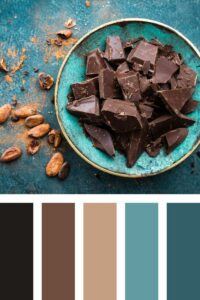

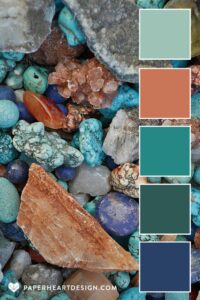
In conclusion, teal’s ability to harmonize with a wide range of complementary colors makes it a designer’s dream. Whether you’re aiming for a vibrant coastal vibe with teal and coral, a touch of opulence with teal and gold, a modern and serene space with teal and gray, or a nature-inspired look with teal and earth tones, the possibilities are endless. Teal’s versatility knows no bounds, and it continues to inspire creativity in the world of design.
Teal Around the World
Teal is not limited by borders; it transcends cultures and continents. Different cultures have embraced teal in their own unique ways:
1. Indian Culture
In the vibrant tapestry of Indian culture, teal takes on the persona of “peacock green.” This rich and enchanting hue is deeply intertwined with spirituality and tradition. Here’s how teal is embraced in India:
- Spiritual Significance: Teal, often referred to as “peacock green” due to its resemblance to the magnificent peacock’s feathers, holds significant spiritual meaning. The peacock is considered sacred in Hinduism and is associated with various deities. Teal, with its connection to the peacock, symbolizes divinity, renewal, and protection.
- Traditional Attire: Teal is a favored choice in traditional Indian clothing, particularly during religious ceremonies and festivals. Women often adorn themselves in sarees and salwar suits featuring intricate teal patterns and embroidery. These garments not only showcase cultural pride but also evoke a sense of reverence.

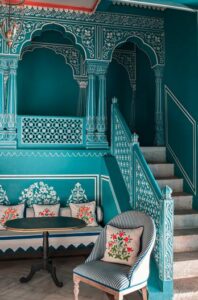

2. Moroccan Influence
Moroccan interior design is renowned for its exotic and intricate aesthetics. Teal plays a pivotal role in Moroccan decor, adding vibrancy and depth to their interiors:
- Tile Patterns: Moroccan tiles, known for their geometric designs and vivid colors, often feature shades of teal. These tiles adorn walls, floors, and even fountains, creating a mesmerizing mosaic of patterns and hues that transport residents and visitors to a world of elegance and mystique.
- Textiles: Moroccan textiles, such as rugs and drapes, frequently incorporate teal as well. The combination of teal with other rich colors and intricate patterns creates an ambiance of opulence and warmth in Moroccan homes.
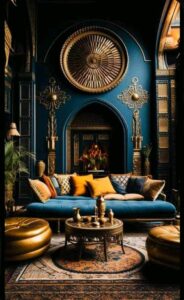
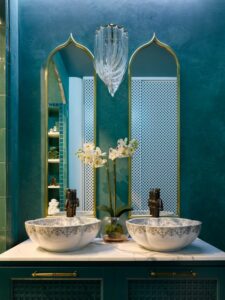

3. Southwestern Vibes
In the vast landscapes of the American Southwest, teal is utilized to reflect the natural beauty of the desert environment:
- Nature’s Palette: Teal captures the essence of desert oases and the vivid blue skies of the Southwest. It is a hue that resonates with the region’s unique flora and fauna. By incorporating teal into decor and clothing, Southwestern communities pay homage to their surroundings and the connection they feel to the desert landscape.
- Home Decor: In Southwestern-style homes, you’ll often find teal accents in the form of throw pillows, blankets, and even pottery. These touches of teal infuse homes with a sense of tranquility and a reminder of the vast, open spaces that define the Southwest.



4. European Elegance
In the world of European design and fashion, teal is synonymous with elegance and refinement:
- High-End Fashion: European fashion designers have long recognized the allure of teal. This color graces the runways, adorning couture gowns and tailored suits. Teal’s sophistication and versatility make it a staple in the European fashion scene.
- Interior Design: In European interior design, teal is often used to create a sense of opulence and grandeur. From luxurious teal velvet sofas to teal-accented wallpapers, this color choice reflects European elegance and a commitment to timeless style.
In conclusion, teal’s global journey is a testament to its universal appeal. It transcends borders, cultures, and continents, seamlessly weaving its way into the tapestry of different societies. Whether in the spiritual traditions of India, the intricate designs of Moroccan interiors, the natural landscapes of the American Southwest, or the refined elegance of European fashion and design, teal continues to captivate and inspire people worldwide.
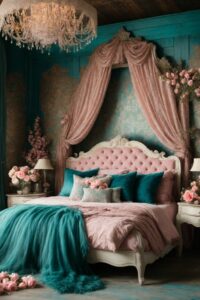
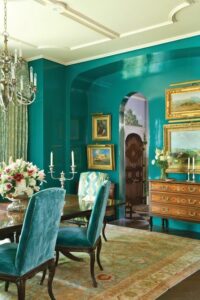
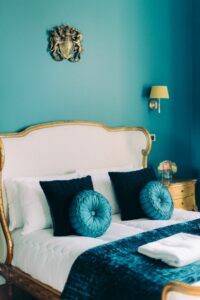
Conclusion
In conclusion, our exploration of the captivating world of teal has been a fascinating journey. We’ve delved into its origins, delved into its psychological effects, and celebrated its incredible versatility in design. Teal, with its unique blend of soothing and inspiring qualities, remains a timeless choice that never fails to captivate the hearts and minds of people around the world.
Eco-Friendly Fashion: Embracing Rust in Sustainable Dresses
Purple Aesthetic in Art and Design: Symbolism and Contemporary Use
Fashion and Beauty Trends: The Rise of the Purple Aesthetic
Bohemian Chic: The Artistic Allure of Champagne Dressin Boho Fashion
